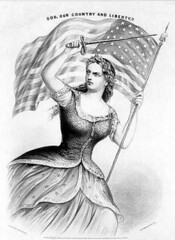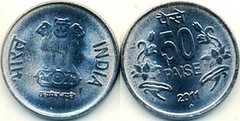
PREV ARTICLE
NEXT ARTICLE
FULL ISSUE
PREV FULL ISSUE
NOTES FROM E-SYLUM READERS: JULY 3, 2011 Using Contemporary Newspapers for Numismatic Research ANS members are probably already aware of this, but there is an interesting article in the new AJN, "'Old Coppers Driven out of Office': Demonetizing Non-Federal Coppers," by Joseph Daragan. It concerns the efforts of the Federal government to restrict the passage of non-Federal coppers as money. It's a good example of using contemporary newspapers to conduct numismatic research. My only quibble with the article is Daragan's citation of the Kleeberg article (Penny-Wise, March 2005, pages 44-48) on the so-called Strawberry Leaf cents as evidence of the counterfeiting of early U.S. large cents. The Kleeberg article has since been refuted and the Strawberry Leaf cents are accepted as U.S. Mint issues. But that's a minor point in this article. Ray Williams added: The article is interesting - I've wondered how long preFederal copper coins, foreign and counterfeit halfpennies circulated in the US. Now I know what the actual story is with respect to Government legislation, but how long were the old coppers accepted in circulation by the public? I know if I were offered a NJ Copper in change, I would NOT turn it away! On Lovett's "Confederate Cents" I hate to see conjecture presented as fact. To the best of my knowledge, nobody has ever found any evidence in any records of the Confederacy that Lovett was commissioned by it to strike coins for it. In the absence of evidence to the contrary, my view is that the "Confederate Cents" have to be considered fantasy pieces. Otherwise, I LOVED the piece on the Harper's "proposal."
Indeed. The tale makes for a good story, but reality isn't always so interesting. Still, I was glad to see the article mentioned both the cent and Half Dollar, which does have a verified connection to the Confederate government.
It's a shame for collector's today that Harper's didn't take the next step and have its design struck up as a satirical token or medal.
-Editor
To read the earlier E-Sylum article, see: HARPER'S WEEKLY "PROPOSAL" FOR A CONFEDERATE STATES COIN (www.coinbooks.org/esylum_v14n26a17.html) Columbia As a Symbol for the United States Arthur Shippee forwarded this item about Columbia. Nothing much numismatic, but it's a good general piece explaining some of the history of the image which appears on many numismatic items. Thanks. -Editor
From these roots in classical symbolism, Columbia's identity gradually solidified during the first half of the 19th century. In these early days, Columbia, or her twin, the Goddess of Liberty, rivaled the American eagle in popularity as an emblem of public patriotic proclamation. While Columbia and Liberty remained more or less interchangeable, appearing on everything from weathervanes to tattoos, artists and writers intended Columbia to represent not just one virtue, liberty, but the entirety of American ideals. To read the complete article, see: Hail, Columbia! (opinionator.blogs.nytimes.com/2011/07/02/hail-columbia/) On Holed Slave Coins I don't know how I missed the previous week's article on 'Holed Slave Coins", but here is the explanation that I got from a metal detectorist about 20 years ago: I had shown him a holed, low grade one reale coin that I had found while metal detecting. His reply, without hesitation was "nice, you found a slave 'token'". Further information was related that the coins were normally very low grade Spanish coins, the coins were given to them (the slaves) by their owners. They were holed so that the slave could wear them tied on their right ankle. Supposedly, they believed that the silver coin would give them protection from diseases, and that the vein in the right ankle led directly to the heart. I have never seen any other information about this anywhere else. However, I did hear it one more time from another old timer, also from Texas.

To read the earlier E-Sylum article, see: MORE ON HOLED SLAVE COINS (www.coinbooks.org/esylum_v14n26a07.html) A New Steel Coin From India
This caught my eye because steel is rarely used for coinage. Coins minted in steel during WWI and WWII corroded easily and were soon retired. Have there been any advances in steel technology that make the metal practice for coinage? It will be interesting to see how these new steel coins hold up in circulation.
-Editor
P.K. Saha adds: This is new Ferritic stainless steel, which has been used for lower denomination coins in India since 1989 ( or so). The initial lot was 10 paise, 25 paise, 50 paise and 1 Rupee. 2 Rupees was done in 2004 and 5 Rupees for a short period when Nickel prices went too high ( between 2005 and 2007). It does not rust. However, some other mints tried the same composition but failed when their steel turned out to be magnetic. Many other mints like Canada and Australia use Mild steel with Copper or Nickel plating for low cost coins. These tend to become rusted after their plating wears out and steel is exposed. I have seen it in coins of Nigeria and some other African and Asian countries. Treasure found in Indian temple I saw this story on the BBC News website. Treasure, thought to be worth billions of rupees, has been unearthed from secret underground chambers in a temple in the southern Indian state of Kerala. Precious stones, gold and silver are among valuables found at Sree Padmanabhaswamy temple. The riches are thought to have been languishing in the temple vaults for more than a century, interred by the Maharajahs of Travancore over time. They have not been officially valued and inspectors are taking an inventory. Inspectors say they will continue cataloguing the treasure for at least one more week. Unofficial estimates say that the treasure discovered so far over four days of inspections may be valued at more than 25 billion rupees ($500m). But historians say that assessing the true value of these objects is likely to be extremely difficult. To read the complete article, see: India: Treasure unearthed in Kerala temple (www.bbc.co.uk/news/world-south-asia-13994351)
The article didn't seem to mention coins, but this one, sent by Dave Wnuck, does.
-Editor
A huge treasure has been found in a Hindu temple in southern India — gold and silver jewelry, coins and precious stones worth billions of dollars, Indian officials said Saturday.
To read the complete article, see:
Treasure worth billions reported in Hindu temple
(www.msnbc.msn.com/id/43621678/ns/world_news-south_and_central_asia/)
The Numismatic Bibliomania Society is a non-profit organization promoting numismatic literature. See our web site at coinbooks.org. To submit items for publication in The E-Sylum, write to the Editor at this address: whomren@gmail.com To subscribe go to: https://my.binhost.com/lists/listinfo/esylum All Rights Reserved. NBS Home Page Contact the NBS webmaster 
|

